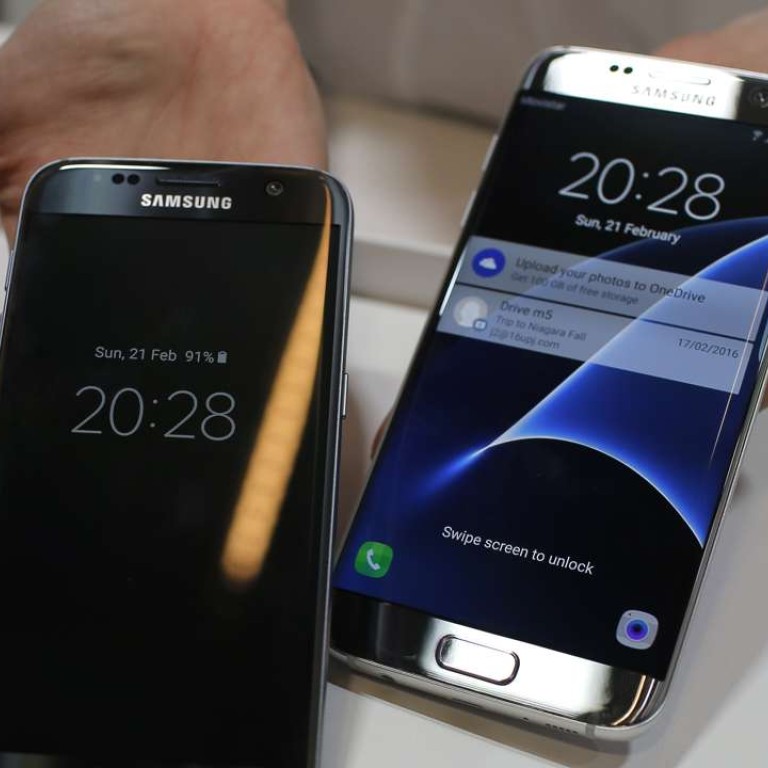
Full review: Samsung Galaxy S7 Edge – a great phone just got even better
If you can live with it being a fingerprint magnet, the Korean manufacturer’s latest premium Galaxy smartphone offers a generous display, smooth body and increased battery life
In terms of looks, the latest Samsung flagship smartphones are hardly head-turners, but on closer examination, the new Galaxy S7 Edge and S7 might just be what the brand’s avid fans have been waiting for.
READ MORE - Review: Samsung Galaxy S7 - great camera, outstanding battery life
Hardware
The S7 Edge is a well-designed smartphone. While it’s built on the earlier S6 Edge, subtle updates have made it all the more pleasing. The whole device appears rounder. Gone are the sharp edges that jut out like a bracket above the glass; instead, the glass almost melds into the metallic body as though it’s part of the chassis.
The camera on the back no longer protrudes like a hump and therefore no longer breaks the smooth, curvy aesthetic. However, the S7 Edge is a fingerprint magnet. It makes you embarrassed to want to show off your shiny curved phone to anyone without a good wipe down.
It seems mobile users have come to accept phones with displays of between 5 and 5.5 inches as a standard. The S7 Edge has a generous display size of 5.5 inches – identical to the iPhone 6 Plus series – but the phone itself is smaller than the latter.
The trade-off, as with most thin-bezelled phones (hello Galaxy Note 5) is that annoying accidental presses are easy to make.
The curved “edge” display is now in its second generation, and sadly it’s still not a pillar feature.
New to the S7 Edge (and soon to older Edge devices receiving the Android 6.0 Marshmallow operating system update) is the Edge Panel. When the phone is unlocked, from any screen or app, you can swipe in from the right edge to bring up panels of information. It occupies a larger area than the Edge Feeds and so naturally it can display more information. The panels could show news, weather, contacts and tasks. Some of these we’ve seen before, but the fact there’s now more space makes them all the more useful. Think of them as extended widgets. This is a great example of Samsung putting that extra memory and processing power to good use.

Camera
My S7 Edge comes with what’s identified as the “IMX260”, which is decidedly a Sony camera sensor. There’s been some hullabaloo over Samsung putting their customers through a bit of a lottery system in terms of camera sensors – you might have a Sony IMX or you might have a Samsung ISOCELL.
Right now I’m not buying into the hype that the S7 has the best smartphone camera and that it’s comparable to DSLRs. That’s not to say it’s bad at all, it’s just that it performs too similarly to that of the S6 (which was good) and improvements are not immediately obvious.
I prefer photos I took with the S6 Edge more than the ones the S7 Edge produced. There’s no doubt the camera lets in even more light because it’s evident in some of the blown-out shots where there is a source of light within the viewfinder.
Night shots in the city proved to be a bit of a challenge when the S7 Edge, while focusing quickly, failed to adjust for the right exposure. Almost every shot required some assistance telling it where to refocus in order to adjust the exposure. Otherwise low-light shots are noise-free, with a slight amount of grain, and are sharper than those taken with the S6.
Daytime shots are not particularly outstanding. They’re fine but do seem one shade below the natural colour, possibly due to the aforementioned exposure phenomenon. Close-up macro shots are sharp and impressive, but again, compared to last year’s effort, the differences are negligible.

Battery
With a 3600 mAh battery and Marshmallow’s Doze app optimisation, the S7 Edge should last – on paper at least. In practice, I find that the battery life can be stretched comfortably to last 36 hours without being too frugal. My typical day includes emails, social media, lots of Bluetooth music, 40 minutes of video and some light gaming. So the fact that I still have more than 30 per cent battery left after a 14-hour day is encouraging.
Speed is less important these days, as we’ve reached a point where it’s more than fast enough for 90 per cent of the tasks. It’s battery optimisation that matters most now. And here, it’s clear Qualcomm’s processor has improved in strides. Google’s Marshmallow Doze ensures battery drain is almost non-existent on idle, so you finally get to enjoy the battery life, instead of it being drained by some rogue app that you forgot to close.

Conclusion
Anyone who already owns an S6 Edge or S6 Edge Plus ought to think twice about upgrading to the S7 Edge because the camera performs similarly and the only difference is a faster processor and the return of the Micro SD Card slot (up to 200GB). But for those switching from other phones, the price premium on the S7 Edge is well worth it for the design upgrade alone – not to mention a generous display and increased battery life.
Samsung Galaxy S7 Edge (dual SIM 32GB), HK$5,998
